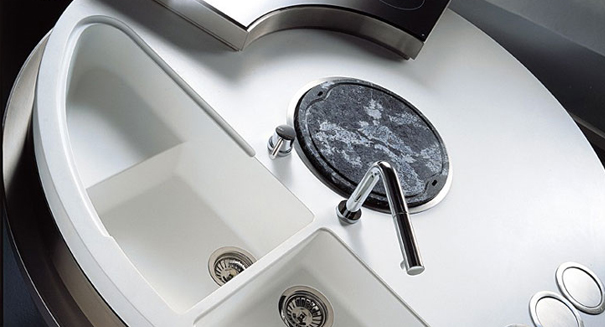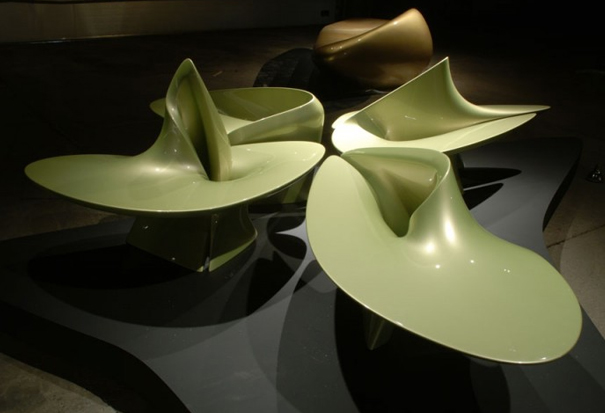Cabriolet by HHF Architects Re-animates a Cultural Icon
I remember the word "Cabriolet" from my childhood. My friend Marilyn (pronounced "Maar-eee-leeeen" in Miami, if you can believe it) owned one, wherein she traveled always accompanied by a jaunty scarf and her beautiful dog named Delilah–they were a sight to behold in that adorable convertible, a much-admired trio of girl, canine, and car. That may not mean much if you were born after 1980, but in my day the Cabriolet was Volkswagen's flagship auto-a resplendent convertible top affair typically in some gleaming girl-friendly shade like lipstick red or fire orange.
Cabriolet. Designed by HHF Architects.
But in spite of the palpable memory, I never researched the word until I came across HHF Architects’ Cabriolet Exhibition and Terrace, which won 1st prize in the sculpture category at the 2010 Swiss Art Awards. The word Cabriolet refers to an early nineteenth-century horse-drawn carriage with a folding hood–hence the application of the name to the Volkswagen convertible (and also the “cab” in taxi cab or hansom cab). Created by Tilo Herlach, Simon Hartmann, and Simon Frommenwiler (the respective H, H, and F of HHF Architects) with Cella Hubel, the Cabriolet piece–presented as both a gallery exhibit and an outdoor installation where it served as a canopy for a terrace–uses the top part of the famed car in conjunction with some outrageously long legs
Those spidery appendages lend the Cabriolet sculpture a retro-futuristic appeal that recalls the giant walking insects of 1950s B movies and the buildings-in-the-sky architecture of a Jetsons cityscape. And yet, given all the aesthetic play of the piece by HHF Architects, it retains an element of practicality: the car roof continues to serve as protection against the elements. The Cabriolet terrace installation paralleled the original car’s appeal–while it looked uncannily small and charming, the car did indeed function as a “real” car. In other words, despite looking like a toy car to be moved about by the small hands of children at play, the Cabriolet was a working automobile–sized to fit full-grown adults driving about in full-grown cities. By removing such an essential piece of such an evocative car, HHF Architects succeeds in making us reexamine the concept of form and function. The notion of defamiliarization gets carried even further when the Cabriolet is placed as an object inside a gallery. As an exhibit, the Cabriolet sculpture becomes a repository of collective memory, cultural and historical.
Via Designboom.




Leave a Reply